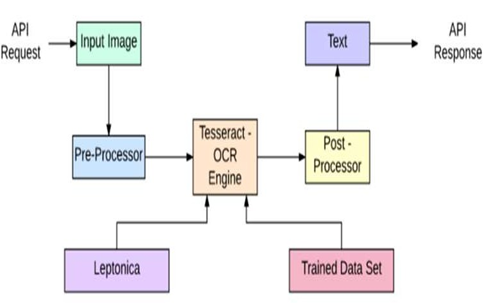Handwritten Digits and Optical Characters Recognition
Main Article Content
Abstract
The process of transcribing a language represented in its spatial form of graphical characters into its symbolic representation is called handwriting recognition. Each script has a collection of characters or letters, often known as symbols, that all share the same fundamental shapes. Handwriting analysis aims to correctly identify input characters or images before being analysed by various automated process systems. Recent research in image processing demonstrates the significance of image content retrieval. Optical character recognition (OCR) systems can extract text from photographs and transform that text to ASCII text. OCR is beneficial and essential in many applications, such as information retrieval systems and digital libraries.
Article Details
References
R. Anil, K. Manjusha, S. S. Kumar, and K. P. Soman, “Convolutional Neural Networks for the Recognition of Malayalam Characters,” in Proceedings of the 3rd International Conference on Frontiers of Intelligent Computing: Theory and Applications (FICTA) 2014, vol. 328, Springer International Publishing, 2015, pp. 493–500.
Y. Tang, L. Peng, Q. Xu, Y. Wang, and A. Furuhata, “CNN Based Transfer Learning for Historical Chinese Character Recognition,” in Proceedings of the 12th IAPR Workshop on Document Analysis Systems (DAS), 2016, pp. 25–29.
Cho Yee Phy, “Tensorflow input image by tfrecord,” 2017. [Online]. tensorflow_input_image_by_tfre cord. [Accessed: 4-Mar2018].
M. Oquab, L. Bottou, I. Laptev, and J. Sivic, “Learning and Transferring Mid- level Image Representations Using Convolutional Neural Networks,” in Proceedings of the 2014 Computer Vision and Pattern Recognition (CVPR), 2014, pp. 1717–1724
L. Hvass, “Tensorflow tutorial 06 CIFAR- 10,” 2016. 3BXfw_1_TF4. [Accessed: 4- Mar- 2018].
Yellapragada SS Bharadwaj, Rajaram P, Sriram V.P, Sudhakar S, Kolla Bhanu Prakash (2020, April). Effective Handwritten Digit Recognition using Deep Convolutional Neural Network. International Journal of Advanced Trends in Computer Science and Engineering, 9(2), 1335-1339.
Vijayalaxmi R Rudraswamimath, Bhavanishankar K (2019, June). Handwritten Digit Recognition using CNN. International Journal of Innovative Science and Research Technology, 4(6), 182-187.
G. Cohen, S. Afshar, J. Tapson, and A. van Schaik, “Emnist: an extension of mnist to handwritten letters,” arXiv preprint arXiv:1702.05373, 2017.
Haider A. Alwzwazy, Hayder M. Albehadili, Younes S. Alwan, Naz E. Islam (2016, February). Handwritten Digit Recognition Using Convolutional Neural Networks. International Journal of Innovative Research in Computer and Communication Engineering, 4(2), 1101- 1106.
Fabien Lauer, Ching Y. Suen, G´erard Bloch (2007). A trainable feature extractor for handwritten digit recognition. Journal Pattern Recognition, Elsevier, 40(6), 1816- 1824.

